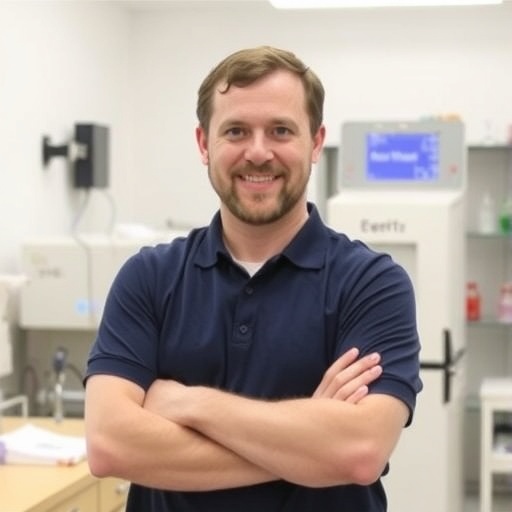In the quest for sustainable water treatment solutions, researchers are increasingly turning their attention to electrocoagulation as a viable technology. This process has generated interest due to its potential for efficient contaminant removal while minimizing the environmental footprint associated with traditional methods. A significant shift is underway in the field of electrocoagulation, with new studies highlighting the transition from batch processing to continuous operation. This transformation could revolutionize how water treatment facilities operate, making them more efficient and capable of meeting the rising demand for clean water.
Electrocoagulation is a process that utilizes electrical current to facilitate the agglomeration of pollutants in water. By applying a direct current to sacrificial electrodes, this method fosters the destabilization of contaminants, leading to their aggregation into larger flocs that can be easily removed. The implications of this technology are vast, especially in areas facing severe water quality issues. The study conducted by Companhia and Scalize delves into the key parameters necessary for scaling up electrocoagulation systems from laboratory batch settings to continuous flow operations, which is a pivotal step in commercializing the technology.
One of the primary advantages of continuous electrocoagulation systems is their ability to operate round-the-clock, significantly improving treatment capacity. Unlike batch systems that require downtime for sludge removal and equipment cleaning, continuous setups can provide uninterrupted water treatment while maintaining efficiency. This transition demands an in-depth understanding of various parameters influencing the process. Key among these are electrode material, current density, and flow rates, all of which must be meticulously calibrated for optimal performance.
Current density is particularly critical in the electrocoagulation process. It is the extent of electric current applied per area of the electrodes, which directly influences the rate at which contaminants are removed. The study highlights that finding the optimal current density is not a one-size-fits-all approach; it varies depending on the composition of the wastewater being treated. Therefore, establishing a relationship between current density and contaminant concentration is fundamental for the design of an effective continuous system.
Moreover, the choice of electrode material plays a substantial role in the efficacy of electrocoagulation. Various metals have been evaluated for their performance as electrodes, with iron and aluminum being the most common due to their availability and effectiveness. However, researchers like Companhia and Scalize emphasize the potential for innovative materials such as stainless steel and even new alloys to enhance performance and longevity of the electrodes. Exploring these alternatives could not only improve operational efficiency but also reduce costs associated with electrode replacement.
Flow rates also come into play as a decisive factor in the scalability of electrocoagulation systems. The study discusses how an optimal flow rate maximizes the contact between the electrical field and the water contaminants, facilitating swift and thorough treatment. Adjustments in flow rate can greatly affect the retention time of sludge and impact the overall efficiency of the system. Finding the right balance is essential for ensuring that the system operates effectively without compromising performance.
Interestingly, the research highlights that operational costs can be reduced without sacrificing treatment quality through adjustments in these parameters. By scaling the technology efficiently, water treatment facilities can achieve a dual benefit: better water quality and reduced expenditure. The implications for industries and municipalities are far-reaching, particularly in areas that currently struggle with outdated and inefficient water treatment processes.
In addition, the study points towards the economic benefits that continuous electrocoagulation systems can provide. By streamlining operations and enhancing efficiency, facilities are likely to see a return on investment over time. Reduced energy consumption and lower cost for chemical coagulants could yield significant savings, making the implementation of electrocoagulation systems a financially prudent choice for both public and private entities.
However, transitioning from batch to continuous operation is not without its challenges. The authors caution that scaling up electrocoagulation systems necessitates more than just a straightforward increase in size and capacity. It requires a holistic approach that considers the entire system’s dynamics, including mixing, electrode arrangement, and power supply consistency. Careful design and simulation are necessary to predict how these various aspects will interact within a larger framework.
Furthermore, the potential environmental impacts of implementing larger electrocoagulation systems must also be assessed. While the process itself has a lower environmental footprint than conventional water treatment options, the energy requirements and infrastructure needed for continuous operation could pose sustainability concerns. Therefore, any future implementation must prioritize eco-friendliness to ensure that water treatment advancements do not inadvertently contribute to other environmental issues.
As cities worldwide face increasing pressure to provide clean water, the advent of scalable electrocoagulation technology could not be more timely. With a sharper focus on resource conservation and efficiency, researchers like Companhia and Scalize are paving the way for practical, innovative solutions to long-standing water treatment challenges. The journey from batch to continuous electrocoagulation represents a significant leap towards sustainability, providing hope for a cleaner water future.
Indeed, the transition to continuous electrocoagulation systems encapsulates the essence of modern water treatment—efficient, cost-effective, and environmentally responsible. As more studies surface, focusing on the various technical parameters influencing this transition, we can expect to see even greater advances in this compelling field. The pursuit of cleaner solutions may not only address current challenges but also prepare us for the water issues of the future.
Subject of Research: Transition from batch to continuous electrocoagulation for water treatment.
Article Title: From batch to continuous in electrocoagulation: key parameters for efficient scaling in water treatment.
Article References:
Companhia, B.J.F., Scalize, P.S. From batch to continuous in electrocoagulation: key parameters for efficient scaling in water treatment.
Environ Sci Pollut Res (2025). https://doi.org/10.1007/s11356-025-36962-8
Image Credits: AI Generated
DOI: 10.1007/s11356-025-36962-8
Keywords: Electrocoagulation, water treatment, sustainability, continuous flow systems, current density, electrode materials, flow rates.




